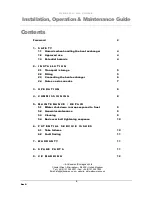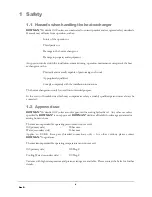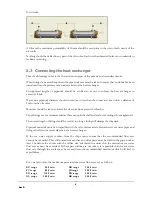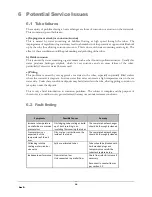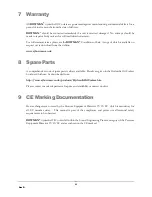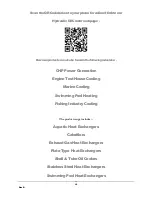
Rev D
8
3 Operation
The oil cooler should be pressurized on the oil (shell) side such that it is at a higher pressure than the
water (tube) side. This will ensure that if a leak occurs it will be detected by a reduction in the oil level
and the oil will not be contaminated. A differential pressure of 2 bar would be sufficient.
It is essential that the following instructions are followed to prevent corrosion/erosion of the heat
exchanger:
a)
Always maintain the water pH to within correct levels. The ideal water pH should be kept within 7.4
to 7.6. On no account should it fall below 7.2 or above 7.8.
b)
Maximum fluid velocity through the oil cooler of 2m/s for sea water (ideal sea water flow rates are
detailed on page 7) or 3m/s for fresh water must not be exceeded. If in doubt contact
BOWMAN
®
for guidance. For shipboard installations an information sheet with orifice plate sizes
is available.
c)
Minimum water velocity of 1m/s should be used.
d)
Ensure compliance with water quality and maximum permissible pressure requirements.
e)
Air must be adequately vented from both circuits.
f)
Stagnant water should not be allowed to accumulate in the oil cooler. If it is not in use for any
period of time the water should be drained off.
4 Commissioning
Commissioning of the heat exchanger should not be undertaken until such time that this document has
been fully read and understood.
The primary and secondary circuits of the heat exchanger must be fully closed prior to
commissioning.
Adequate provision should be made to ensure that correct operating/service equipment along with
personal protection (PPE) in accordance with current standards/legislation is utilised prior to the
commencement of any working.
Cooling water should be introduced to the oil cooler prior to the gradual introduction of hot oil.
Both circuits should be vented initially and again when operating temperatures and pressures are
reached. The system should be checked for leaks.
5 Maintenance / Repair
5.1 Winter shutdown in areas exposed to frost
Care should be taken to prevent frost damage from a winter shutdown in conditions exposed to frost.
We recommend fully draining down the heat exchanger or removing the heat exchanger completely
from the installation throughout the duration of the shutdown period.



